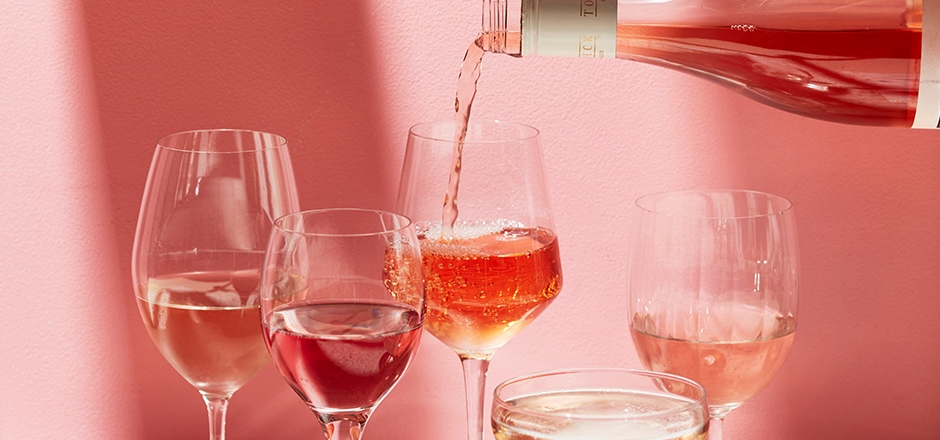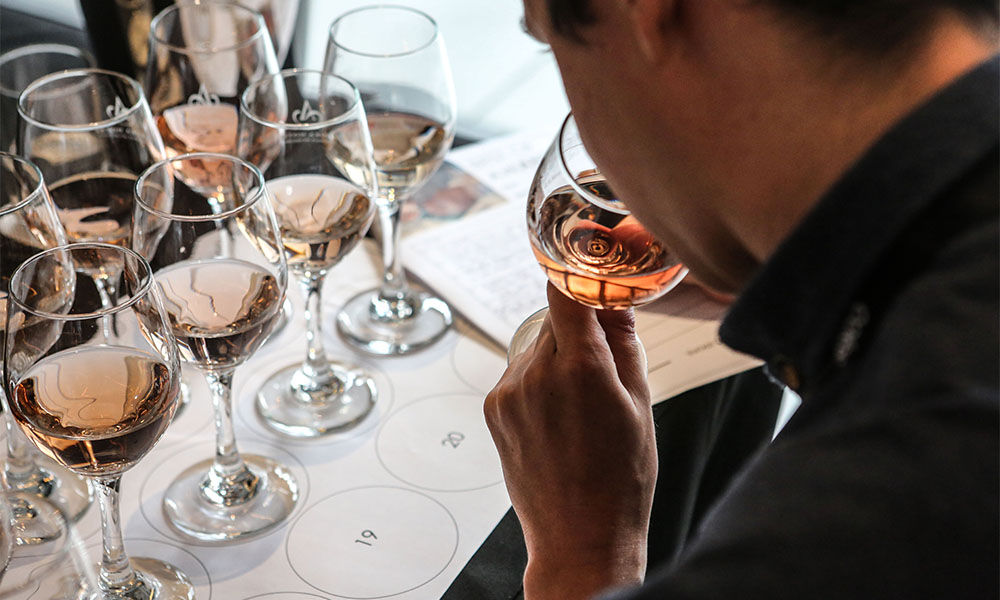

THE GRApe
- The Grape
Not So Sweet: Explore the Spectrum of Rosé
Read Time 3 Minutes
Posted 31 Aug 2022
By Vintage Cellars
When the weather warms up, you’re likely to seek refreshing and light wines that pair well with long afternoons in the sun. To us, spring means a chilled glass of rosé – and judging by its growth in popularity, we’re not the only ones.
What you might not know is that picking a bottle of rosé is not as straightforward as it seems; in fact there are a few things to consider when exploring the spectrum of pink wine.
Here’s a guide to choosing your next bottle.



The Colour
Not just aesthetically pleasing, the colour of rosé can actually be an indicator of its flavour. The colour of the wine is dependent on how it is produced; leaving the skins with the crushed grapes a day or two before they’re separated, means the wine will be darker.
Darker rosé can have a slightly richer taste and is often fruitier than its paler counterparts. You’ll find that the clearer pinks are lighter and have a crisper taste. The colour scale may vary (you could discover rosé that is the colour of grapefruit and one the colour of blackberries comfortably sitting side-by-side on the same shelf) but the primary flavours of rosé are still red fruit, florals and citrus.
If you’re still having trouble deciding on a colour scheme, try a light, medium and dark variation and see which best catches your interest.
Where It’s From
It’s often said that the spiritual home of rosé is the south of France. In fact, rosé is so celebrated there that is has its own research institution – The Centre for Rosé Research in Provence has catalogued over 140 hues of rosé.
France produces traditional dry rosé, often with notes of strawberry and citrus, and thus choosing a bottle from Provence, the Rhône valley, or the Loire valley is usually a safe bet. Rosés from Northern Spain are also popular, being renowned for their full-bodied wines which pair well with hearty meals. (Rosé is often thought of as a refreshing drink by itself, but the heavier drops are great for sharing over dinner.)
While it’s tempting to think that pink wines from international vineyards are superior, it’s simply not true! Australian rosé tends to be fruitier than the French version. Many come from warmer regions like the Barossa Valley and McLaren Vale, but cooler-climate regions like the Adelaide Hills also shine with releases like Bird in Hand’s pale and savoury Pinot Rosé, and there are some fine examples from Western Australia.
Don’t forget – if you’re unsure on which region to pick, feel free to pick the region that produces your favourite red wine!
The Vintage
Usually the older the wine, the better it is – not so with rosé. Rosé does not need to be aged to develop flavour, so don’t be ashamed to pick up a bottle that has the current year printed on it. According to Nielsen research, rosé sales have grown some 10 times faster than overall wine sales in recent years, so you’re sure to find many bottles in your local Vintage Cellars.
Dry Versus Fruity
If you have an inkling as to which style of rosé you’d prefer, don’t hesitate to ask a Vintage Cellars team member before you purchase or give our Wine Concierge a call. Dry rosé is probably the most popular style, and is often from older winemaking regions in France, Spain and Italy.
So, what does ‘dry’ mean exactly? Dry rosé will be crisp and tart, whereas the sweeter styles – which often hail from Australia and New Zealand – are typically fruitier.
However, your rosé doesn’t have to be categorised as just dry or sweet. Once you’ve become more acquainted with pink wine, you can explore fruity, floral and even savoury variations. Once you know the basics, the world is your oyster.
- The Grape
- View More Posts The Grape






